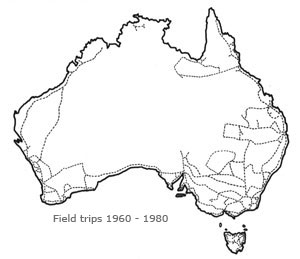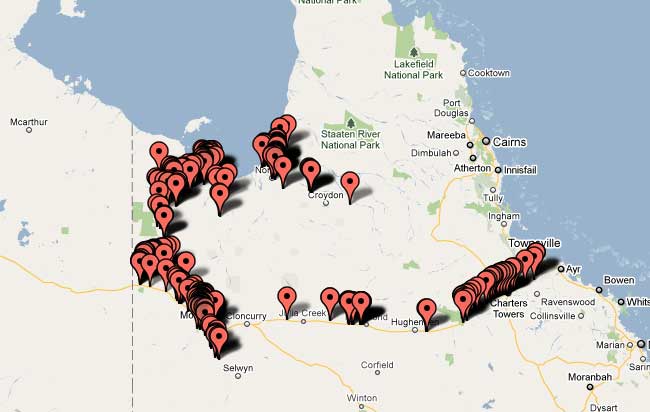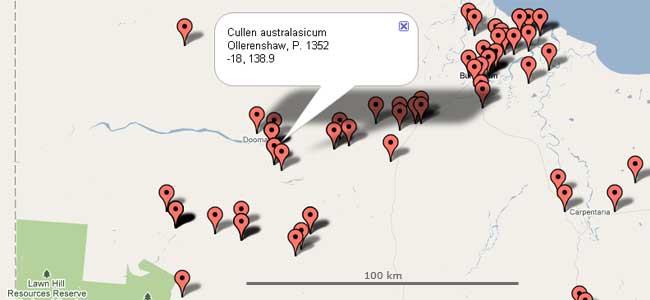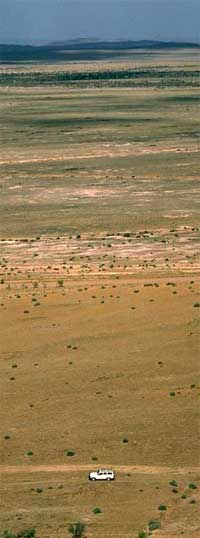Collecting Living Plants
Modern Field Trips | Collecting Herbarium specimens |
The Gardens' collection has been based on wild field collections from its inception. Lindsay Pryor and Erwin Gauba undertook collecting trips to the Snowy Mountains in the 1950s, and from the time Betty Phillips was appointed as Curator of the Herbarium in 1960, major field trips were undertaken to many parts of Australia. These trips included horticultural staff to collect cutting material and seed, and botanical staff to collect matching voucher herbarium specimens.
 Some major early field trips include:
Some major early field trips include:
- Western Australia, two months, Sept-Oct 1962
- Western Australia, three months, Sept-Nov 1968
- North Queensland, May-June 1972
- Flinders Ranges, SA, Sept 1973
- North-west Queensland & Gulf, July 1974
- Kimberley, WA, July-August 1977
- Iron Range, Queensland, Sept 1977
- Kakadu, NT, April + August 1980
The north-west Queensland & Gulf field trip in 1974 is an example of a typical early collecting trip.
The herbarium collections mapped out on Google give and idea of where the collectors went and their rate of collecting. In this case the two staff flew to Townsville and hired a 4WD vehicle. The first collection is dated 1 July, the last is dated 17 July.
411 herbarium specimens were collected.

A closer look at an area of this map, shows the collections in more detail, and part of the data available for a collection event, using Peter Ollerenshaw's collecting number 1352 as an example, with its coordinates displayed as decimal degrees:

Propagation material in the form of cuttings and seed would have been air-freighted back to Canberra whenever the participants had accesss to an airport, and herbarium specimens were also air-freighted back in most cases.
This field-trip resulted in 411 herbarium specimens plus 160 items of propagating material associated with herbarium vouchers (45 as cuttings, 89 as seed, some with both and 12 as living plants).
Go to: Current field collecting for the living collection
![Director of National Parks [logo]](../../../images/dnp_90px.gif)






